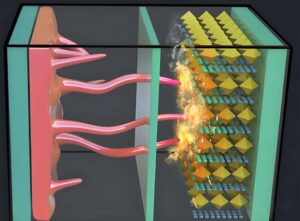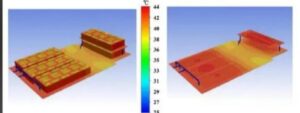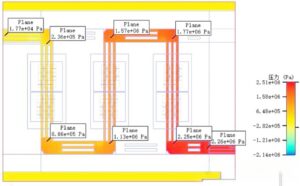Why does the phone battery drain fast in winter? Why weak EV acceleration? Temperature is the culprit! Deep dive into how low/high temps & battery temperature differences harm lithium battery performance, lifespan & safety. Discover professional thermal management solutions. Unlock battery health secrets!
1. Temperature: the “double-edged sword” of battery performance
The shackles of low temperature: capacity reduction and lithium precipitation risk
Battery life reduction:
- The activity of lithium ions is reduced, and the available capacity is sharply reduced (such as the rapid power loss of mobile phones in severe cold).
Power limitation;
- The internal resistance increases, and the large current charging and discharging capacity decreases (electric vehicles are difficult to accelerate in winter).
Fatal lithium precipitation:
- When forced fast charging, lithium metal crystals may pierce the diaphragm, causing micro short circuits, and burying the hidden danger of thermal runaway!
Life decay:
- Slow ion diffusion, low utilization of active materials, and long-term low temperature accelerate battery aging.

High temperature runaway: countdown to thermal runaway
Safety red line:
- SEI film decomposition and electrolyte reaction at high temperature, violent heat release triggers thermal runaway, leading to smoke, fire and even explosion!
Life killer:
Side reactions consume active lithium, and capacity declines. Experiments show that the cycle life at 46℃ is far lower than the ideal environment at 25℃.
2.Temperature difference: “performance assassin” hidden in details
The temperature difference of the battery system is divided into two categories:
- Temperature difference inside the cell:
The temperature of the cell itself is uneven (such as “cold on top and hot on bottom” when the bottom is heated), which is mainly determined by the thermal conductivity of the material and is difficult to completely eliminate. - Temperature difference between cells:
The temperature of the cells in the battery pack is inconsistent, which is the core battlefield of thermal management design!
The fatal impact of temperature difference – “barrel effect”!
- In a series battery pack, the worst performing single cell determines the overall output power.
- Single cells in high temperature areas will age quickly, resulting in accelerated capacity decay and dragging down the performance of the entire battery pack.
- Long-term accumulation will lead to a widening difference in the state of single cells, which will significantly reduce the available capacity of the system.
3. Thermal management design: give the battery “smart air conditioning”
Solve the problem of temperature difference between single cells:
Flow channel optimization:
- Adjust the coolant flow or flow channel cross-sectional area to balance the heat dissipation/heating intensity in different areas.
Temperature uniformity:
- Use thermal conductive materials and optimize the layout of the heat sink to minimize the temperature difference between single cells.

BMS collaboration:
Use active and passive balancing technology to compensate for the capacity difference between single cells caused by temperature difference and extend the system life.
Engineering experience:
- Heating is required at low temperatures: keep the battery running at the optimal temperature to avoid lithium deposition.
- Strong heat dissipation capacity is required at high temperatures: maintain safety limits and delay side reactions.
- Temperature difference control is the key: optimize thermal management design to improve the overall performance and life of the battery pack!
